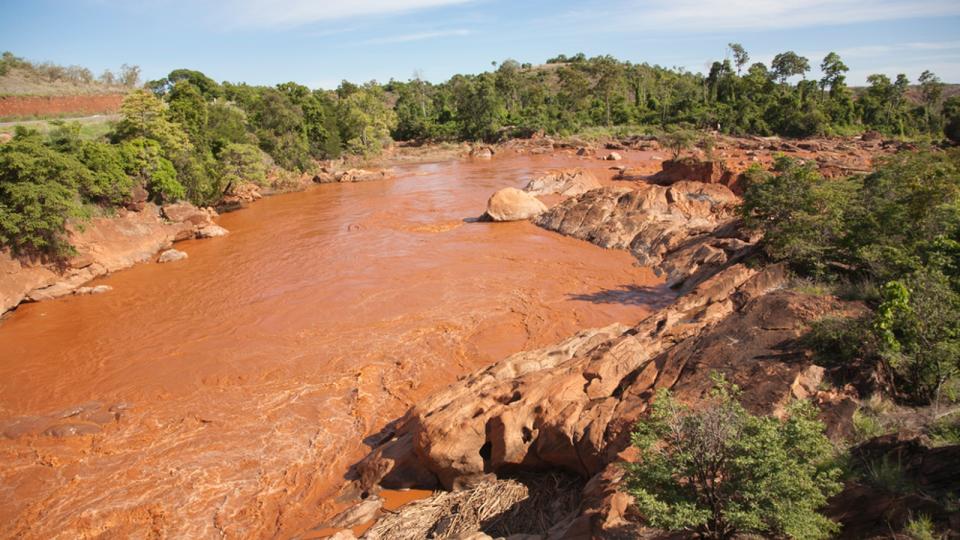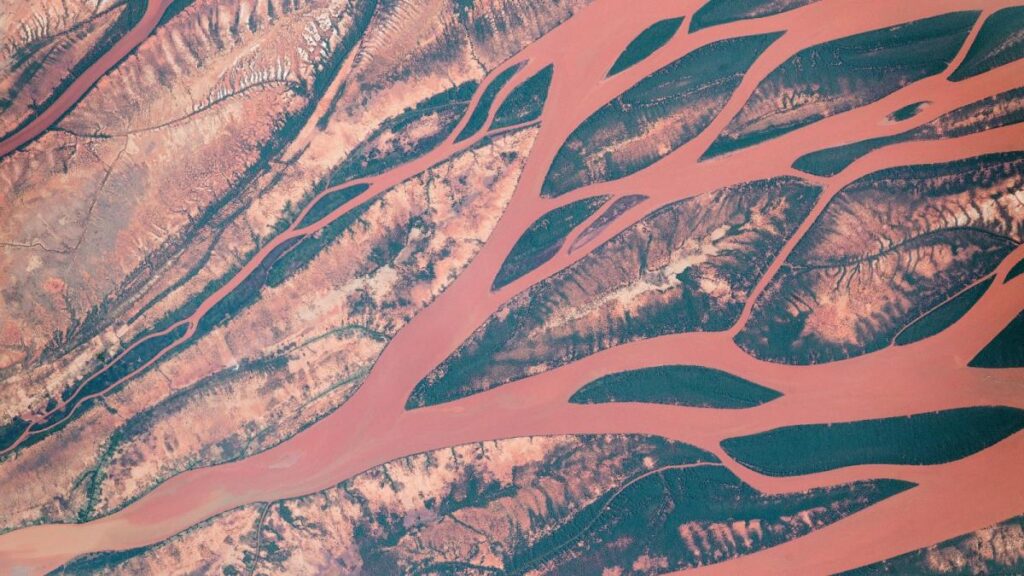QUICK FACTS
Where is it? The Betsiboka River, Madagascar (-15.920729, 46.367102).
What is in the photo? An intricate, rust-colored waterway formed by mangrove islands.
Who took the photo? An unnamed astronaut aboard the International Space Station.
When was it taken? June 29, 2018.
This striking astronaut photo shows the intense color and intricate shape of Madagascar’s Betsiboka River as it meanders through an archipelago of mangrove islands that have helped stabilize and reshape the waterway, while destructive human practices have left it on the brink of bring abyss.
The Betsiboka stretches for about 525 kilometers, from one of Madagascar’s central highlands to Bombetoka Bay on the island’s northwest coast. As the river approaches the sea, the river splits to form a network of braided waterways known as a delta, as the discolored water is diverted around a series of small islands.
These lemon-shaped islands are made of sediment held together by the deeply interwoven roots of mangrove trees. Some of the larger islands show visible erosion features near the center, where water has seeped through the persistent trees NASA’s Earth Observatory. Without the roots, the islands would quickly be washed away by the river, which could destabilize the surrounding ecosystem.
The Betsiboka Delta is often referred to locally as the “red lands” due to the dark orange hues of its flowing water. This striking color is the result of heavy stains of soil rich in rust-like iron oxides known as laterite, according to NASA’s Earth Observatory.
Related: 12 fantastic images of Earth from space


The Betsiboka’s color naturally intensifies when heavy rainfall from tropical storms washes more laterite from the surrounding land, according to the European Copernicus programme. However, human activity also changes the river.
According to NASA’s Earth Observatory, about 40% of Madagascar’s forest cover has been destroyed since 1950 by forest fires, agricultural grazing and ‘slash and burn’ clearing. As a result, the Betsiboka now runs over more unstable ground, making it easier for more sediment to be washed down the river.
A 2010 study, using thirty years of Landsat satellite data between 1973 and 2003, found that this increased erosion has led to darkened the river considerably.
MORE EARTH FROM SPACE
—Ethereal algae vortex blooms in the heart of the Baltics’ vast ‘dead zone’
—Trio of multicolored lakes looks otherworldly in Africa’s Great Rift Valley
—Mysterious wave ripples over ‘galaxy’ of icebergs in Arctic fjord
The loss of forests has also increased the river’s flow rate as rainwater enters the waterway more easily, putting more strain on the mangrove islands in the delta.
The changes in the Betsiboka are impacting locals who depend on the river for drinking water, bathing, washing and agriculture, according to the Madagascar news site Mada magazine.







